Candy Cane
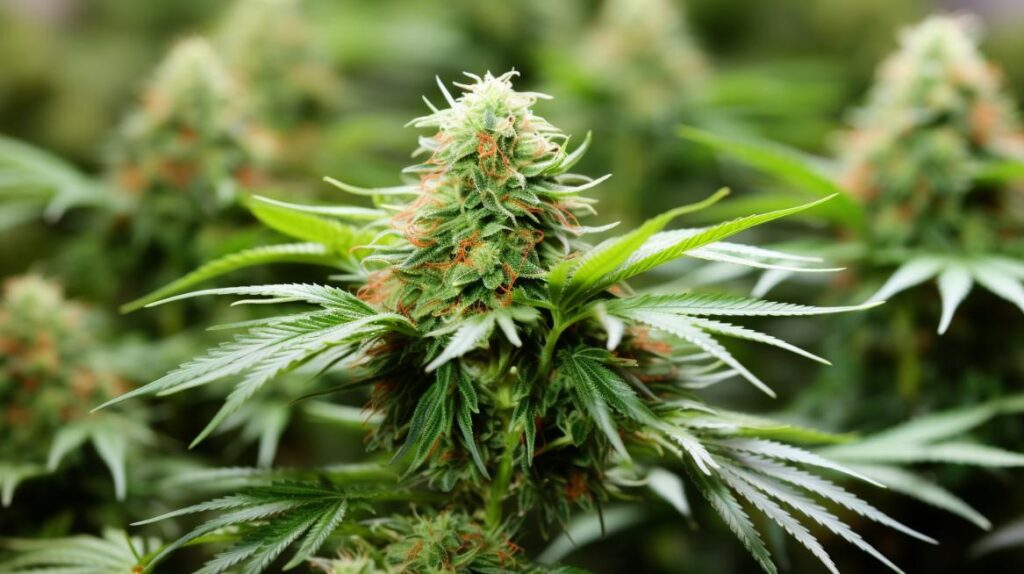
The Candy Cane strain, an indica-dominant hybrid, presents an intriguing amalgamation of genetics and effects that beckon a closer examination. With its lineage tracing back to AK-47, Mango, and White Widow, it offers a unique blend that promises an energetic, euphoric experience tempered by a comforting body relaxation.
Its distinctive sweet mint and berry aroma, coupled with its versatile therapeutic applications, raise questions about its potential beyond recreational use. How does Candy Cane compare to its parent strains regarding potency and user experience? Additionally, what does current research suggest about its efficacy in treating specific medical conditions?
These aspects underscore the complexity and potential of the Candy Cane strain within the broader cannabis landscape.
Genetic Lineage
Delving into the genetic lineage of the Candy Cane strain reveals a meticulously crafted indica-dominant hybrid, stemming from a crossbreed of AK-47, Mango, and White Widow. This sophisticated amalgamation results in a genetic makeup that is 70% indica and 30% sativa, highlighting the careful selection and breeding process aimed at achieving a specific set of characteristics. The inclusion of White Widow, a renowned strain known for its potent resin production and balanced high, plays a pivotal role in the Candy Cane strain’s genetic makeup. This validation not only contributes to the strain’s robust THC levels, which range from 15% to 20%, but also enhances its ability to deliver a euphoric and uplifting experience while maintaining a significant degree of physical relaxation.
The genetic lineage of Candy Cane, with its roots deeply embedded in strains celebrated for their unique attributes, predetermines its potential therapeutic applications. It is particularly effective in treating conditions such as fatigue, depression, insomnia, and migraines. This is a confirmation to the thoughtful genetic engineering that combines the stimulating euphoria from AK-47, the tropical sweetness from Mango, and the resilience and potency of White Widow, culminating in a strain that is both potent and aromatic, with a distinct sweet minty aroma complemented by a pungent berry edge.
THC/CBD Content
With its THC levels ranging from 15% to 20%, the Candy Cane strain exhibits a potent chemical profile that underpins its therapeutic efficacy and recreational appeal. As an indica dominant hybrid, with a 70% indica and 30% sativa composition, Candy Cane is engineered for those seeking both physical relaxation and a euphoric uplift. The strain’s THC content places it comfortably in the mid to high range of potency, making it suitable for a wide array of users, from the moderately experienced to the seasoned.
-
Therapeutic Applications: The THC level in Candy Cane makes it particularly effective for treating conditions such as fatigue, depression, insomnia, and migraines. The psychoactive effects can provide significant relief from symptoms, enhancing the quality of life for patients.
-
Recreational Use: The euphoric and energetic experience offered by Candy Cane appeals to recreational users. The balanced THC content ensures a potent, yet not overwhelming, high that is both enjoyable and manageable.
-
Genetic Influence: The cross of AK-47, Mango, and White Widow strains has resulted in a unique THC profile that contributes to Candy Cane’s distinct effects. This genetic lineage influences its potency, making it a compelling choice for those seeking an indica dominant hybrid with significant therapeutic and recreational potential.
Terpene Profile
Exploring the terpene profile of the Candy Cane strain reveals a complex bouquet of sweet minty aromas complemented by berry undertones, primarily driven by the presence of limonene, myrcene, and caryophyllene. This unique terpene combination not only defines the distinct scent and flavor of Candy Cane but also suggests a range of potential therapeutic benefits, including stress relief, relaxation, and anti-inflammatory properties.
| Terpene | Characteristics & Benefits |
|---|---|
| Limonene | Offers a sweet, citrus aroma that is uplifting and may aid in stress relief and mood enhancement. |
| Myrcene | Contributes to the strain’s mildly earthy and berry undertones, potentially offering relaxation and anti-inflammatory benefits. |
| Caryophyllene | Delivers a spicy note that might help in reducing inflammation and pain, adding depth to the Candy Cane’s complex profile. |
Understanding the terpene profile of Candy Cane allows users to make informed choices based on desired aroma, taste, and the therapeutic benefits associated with these compounds. This analytical approach to the selection of cannabis strains makes sure that individuals can match their personal preferences and needs with the specific characteristics of Candy Cane, enhancing the overall user experience.
Effects
Having examined the terpene profile of the Candy Cane strain, it is now important to analyze its effects on users, which encompass a spectrum of sensory and therapeutic experiences. The primary effects reported include a sense of relaxation, sleepiness, and an increased appetite. However, it’s vital to address the complexity and variability of these effects, which are not uniform across all users. The experiences elicited by Candy Cane can be profoundly influenced by individual physiology, the context of use, and the specific characteristics of the strain itself.
To convey a deeper meaning for the audience, consider the following:
-
Sensory Experience: Candy Cane’s unique blend of mango, mint, and sweetness contributes to a distinctive sensory experience, distinguishing it from other strains with similar effects. This sensory profile can enhance the overall experience of relaxation and well-being.
-
Therapeutic Potential: While not to explore into medical advice, the reported relief from stress, anxiety, and insomnia highlights the strain’s potential utility in a therapeutic context, emphasizing the importance of further research and individualized assessment.
-
Adverse Reactions: Awareness of potential adverse reactions, such as dizziness, paranoia, and headaches, is important for informed usage. These effects underscore the importance of moderation and the variability of cannabis experiences among different individuals.
Medical Uses
The Candy Cane strain has attracted attention for its use in managing various medical conditions, including stress, anxiety, and insomnia, according to user reports. With 28% of users highlighting its effectiveness in stress management, it emerges as a vital option for those looking to mitigate stress-induced symptoms in a professional and medical context. Additionally, its potential in alleviating anxiety is notable, with 23% of individuals acknowledging its benefits. This aligns with the increasing recognition of cannabis strains as adjunct therapeutic options for anxiety disorders within the medical community.
In addition, Candy Cane’s role in improving sleep quality is underscored by 21% of users, positioning it as a potential intervention for insomnia. This is particularly relevant in professional settings where the consequences of sleep disturbances can have a significant impact on performance and well-being. The strain’s reported efficacy in providing relief for mild pain and discomfort further broadens its medical applicability, offering a multifaceted approach to patient care.
However, it is essential to emphasize the importance of seeking professional medical advice before utilizing the Candy Cane strain for medical purposes. This ensures that its use is aligned with individual health profiles and medical histories, optimizing safety and efficacy in treatment outcomes.
Flavor and Aroma
Delving into the sensory dimensions of the Candy Cane strain reveals a complex aromatic profile, characterized by a sweet mint aroma underscored by pungent berry nuances. This distinct combination contributes to an olfactory experience that is as enchanting as it is unique, firmly establishing Candy Cane’s position within the pantheon of uniquely flavored cannabis strains. The interplay between its minty and berry elements crafts a sensory profile that is reminiscent of the festive season, yet appealing all year round.
Thus, the Candy Cane strain presents a triad of notable characteristics:
-
Sweet Minty Berry Flavor: The initial taste is a delightful blend of sweetness and mint, akin to the traditional candy cane. This sweetness is beautifully complemented by a hint of berry, adding depth to the flavor profile.
-
Pungent Exhale: Upon exhale, users experience a pungent, almost earthy aftertaste that contrasts with the initial sweetness, adding complexity to the smoking experience.
-
Unique Sensory Experience: The combination of sweet, minty, and pungent elements offers a unique sensory experience, distinguishing Candy Cane from other strains both in flavor and aroma.
This detailed examination underscores the significance of Candy Cane strain’s flavor and aroma, highlighting its appeal to enthusiasts seeking a distinctive cannabis experience.
Appearance
A striking feature of the Candy Cane strain is its neon green buds, accentuated by minty green patches and a fine, frosty layer of white trichomes, which render a sparkling appearance reminiscent of its namesake. The visual appeal of this cannabis strain is not just limited to its vibrant coloration. The presence of a sweet minty berry aroma adds another layer of allure, making it a standout among other cannabis varieties. The combination of its unique appearance and aromatic profile positions the Candy Cane strain as a visually and olfactorily appealing option for cannabis connoisseurs.
| Feature | Description |
|---|---|
| Bud Color | Neon green with minty green patches |
| Trichome Coverage | Fine, frosty layer of white trichomes |
| Aroma | Sweet minty berry |
| Visual Appeal | Sparkling appearance, reminiscent of a Christmas candy cane |
| Comparative Aspect | Stands out among cannabis varieties due to its unique appearance and aroma |
This analytical breakdown showcases the Candy Cane strain’s distinctiveness with its appearance and aromatic qualities, highlighting its appeal in the cannabis market.
Grow Information
Developed by Crop King Seeds, the Candy Cane strain exhibits a relatively short flowering time of just 7 weeks, positioning it as an efficient choice for cultivators. This expedient maturation period allows for quicker rotations of crop cycles, enhancing productivity and potentially increasing the annual yield for growers. Given its indica lineage, Candy Cane manages to combine a robust growth profile with the capacity for daytime use, attributed to its uplifting effects, making it a versatile strain not only in cultivation but also in consumption.
When delving into the growth information of the Candy Cane strain, several key aspects should be highlighted:
-
Ideal Environment: Being an indica-dominant strain, Candy Cane thrives in environments that can mimic its natural habitat. This includes controlled indoor settings with ideal lighting and temperature regulation or outdoor setups in climates that offer a consistent, moderate temperature range.
-
Water and Nutrition Needs: This strain requires a balanced approach to watering and nutrition. Over-watering can lead to root issues, while underfeeding can diminish its yield and potency. A well-calibrated feeding schedule is essential for maximizing the strain’s potential.
-
Potential Side Effects in Cultivation: While the strain is generally resilient, potential side effects such as susceptibility to pests or mold in suboptimal growing conditions should be monitored. Proactive management practices can mitigate these risks, ensuring a healthy growth cycle and preserving the strain’s desired effects.
Adverse Effects
Examining the adverse effects associated with the Candy Cane strain reveals a spectrum of potential reactions, including dizziness, paranoia, and headaches, that users should be cognizant of. These adverse effects, while not universally experienced, present a significant consideration for individuals exploring the therapeutic and recreational potentials of this particular cannabis variety. Dizziness, a common yet often overlooked consequence of cannabis consumption, has been specifically reported by users of the Candy Cane strain. This symptom can affect one’s balance and spatial orientation, potentially leading to discomfort or accidents if not anticipated.
Paranoia, another notable adverse effect, underscores the psychological risks associated with cannabis use, particularly in strains like Candy Cane that may possess potent psychoactive properties. This state of heightened anxiety can detract from the user’s experience, emphasizing the necessity for moderation and awareness of one’s psychological predisposition towards cannabis-induced anxiety.
Moreover, headaches have been documented as a negative side effect by a minority of Candy Cane users. This reaction, although less common, highlights the strain-specific sensitivities that can arise, necessitating an individualized approach to cannabis consumption. Additionally, minor adverse effects such as dry eyes and cottonmouth may occur, further illustrating the multifaceted nature of cannabis-related reactions. Collectively, these insights into the adverse effects of the Candy Cane strain contribute to a more nuanced understanding of its impact on users, fostering informed decision-making in cannabis use.
Comparisons with Similar Strains
Understanding the unique profile of the Candy Cane strain, including its adverse effects, sets the stage for a detailed analysis of how it compares with similar indica-dominant hybrids regarding genetics, effects, and therapeutic applications. The Candy Cane strain, with its 70% indica and 30% sativa genetics, positions itself distinctively within the cannabis landscape.
When comparing Candy Cane to similar strains, several key aspects emerge:
-
Genetic Composition: Candy Cane is a cross of AK-47, Mango, and White Widow, offering a unique blend that influences its effects and therapeutic potential. Similar strains might not provide the same intricate balance between uplifting euphoria and physical relaxation.
-
Therapeutic Applications: While many indica-dominant hybrids are beneficial for conditions like pain and anxiety, Candy Cane’s reported effectiveness in treating fatigue, depression, insomnia, and migraines sets it apart. This specificity in therapeutic use underscores the importance of consulting with a health professional before using cannabis for medical purposes.
-
Aroma and Flavor Profile: The distinct sweet mint aroma with a hint of pungent berry differentiates Candy Cane from other strains that might offer more earthy or citrus tones. This unique sensory experience often makes it a preferred choice among people looking for a specific flavor profile in their cannabis products.
Research and Studies
Numerous studies have investigated the pharmacological profile of the Candy Cane strain, focusing on its unique genetic composition and the consequent therapeutic benefits it offers to users. Originating from a blend of AK-47, Mango, and White Widow, this indica-dominant hybrid is noted for its THC levels ranging from 15% to 20%. Research highlights its potential in delivering an energetic and uplifted euphoric experience, making it a candidate for cannabis for medical use, especially in individuals experiencing fatigue, depression, insomnia, and migraines.
Clinical observations and patient reports underline Candy Cane’s efficacy in providing mild pain relief, enhancing sleep quality, and offering a relaxing experience without heavy sedation. Its sweet mint aroma and berry flavor profile add to its appeal, possibly contributing to its therapeutic effects through aroma and flavor therapy principles. As research into cannabis strains like Candy Cane expands, understanding its specific pharmacodynamics becomes critical for optimizing therapeutic outcomes.
Patients considering Candy Cane for medical purposes should seek the advice of a healthcare professional. Given the complexity of cannabis pharmacology, professional medical advice ensures personalized and safe usage, aligning treatment with individual health needs and conditions.
History and Origin
Building on the pharmacological insights, exploring the history and origin of the Candy Cane strain reveals its intricate development and the intentional breeding that resulted in its unique characteristics. The genesis of Candy Cane is a confirmation of the expertise and dedication of cultivators aiming to create a strain with specific therapeutic benefits. By crossbreeding AK-47, Mango, and White Widow, breeders sought to combine the best attributes of each parent strain, leading to the emergence of Candy Cane as an indica-dominant hybrid.
The objectives behind its creation were multifaceted:
-
To Provide an Energetic and Uplifted Euphoric Experience: Targeting symptoms of fatigue, depression, insomnia, and migraines, Candy Cane was engineered to offer relief where traditional medications might fall short. People say it helps bring about similar effects to Candy, offering uplifting energy and motivation.
-
To Achieve a High THC Content: With a THC level ranging between 15% to 20%, the strain was intended to deliver long-lasting waves of euphoria, using its potent content to guarantee efficacy.
-
To Offer Unique Aromatics and Aesthetics: The sweet mint aroma with a hint of pungent berry, alongside the visually appealing neon green nugs with white trichomes, were selectively bred to enhance the user experience, making the use of Candy Cane not just therapeutic but also enjoyable.
Frequently Asked Questions
Is Candy Cane Indica or Sativa?
The query regarding the classification of Candy Cane focuses on its genetic composition. Candy Cane, with its notable effects, THC content, and cultivation insights, is mainly an Indica-dominant hybrid, blending both Indica and Sativa characteristics.
Is Candy a Sativa or Indica?
Candy, in the context of cannabis strains, often refers to hybrids that balance sativa and indica properties, with THC levels varying. Hybrid strains like these offer nuanced effects, blending candy flavors with therapeutic benefits.
Is Candy Jam a Sativa or Indica Strain?
Candy Jam’s classification as indica or sativa depends on its unique candy genetics, flavor profiles, and specialized cultivation techniques. Understanding these aspects is essential for accurately categorizing its strain lineage and expected effects.
Is Candy Glue Indica or Sativa?
Candy Glue, distinguished by its unique genetics, is a hybrid strain blending sativa and indica traits. It exhibits a complex flavor profile and requires specific growing techniques to optimize its potent effects and aromatic qualities.

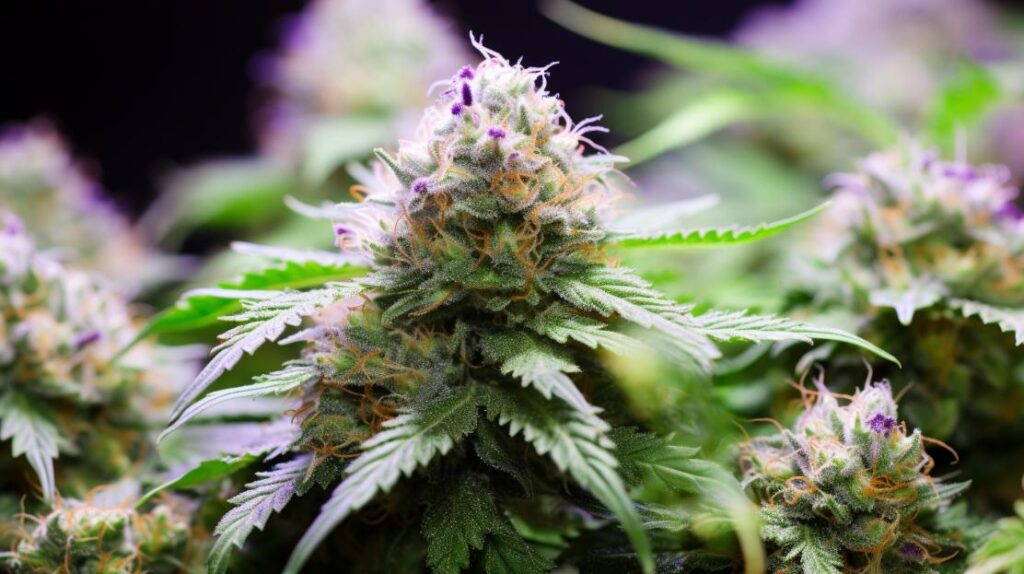

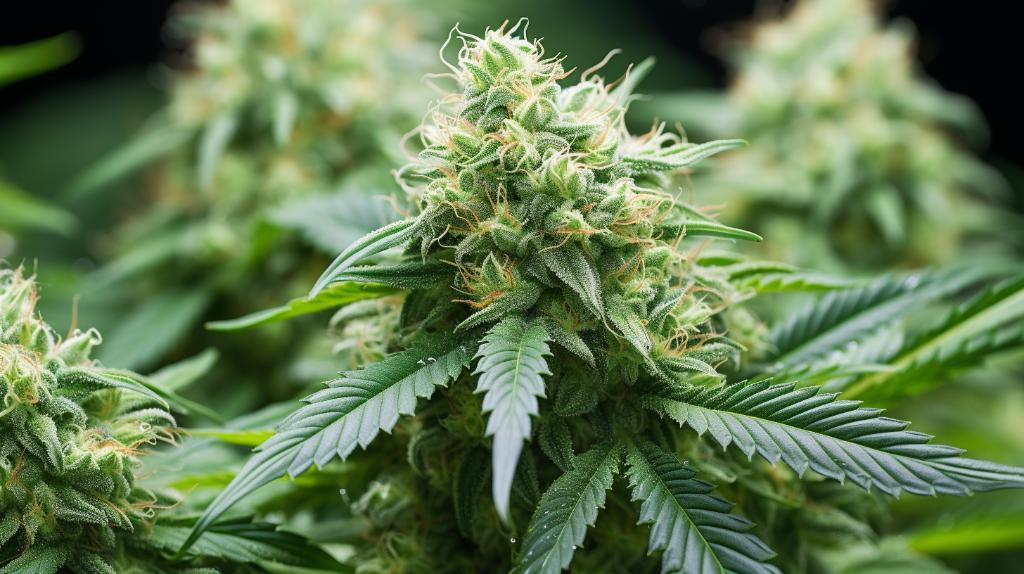
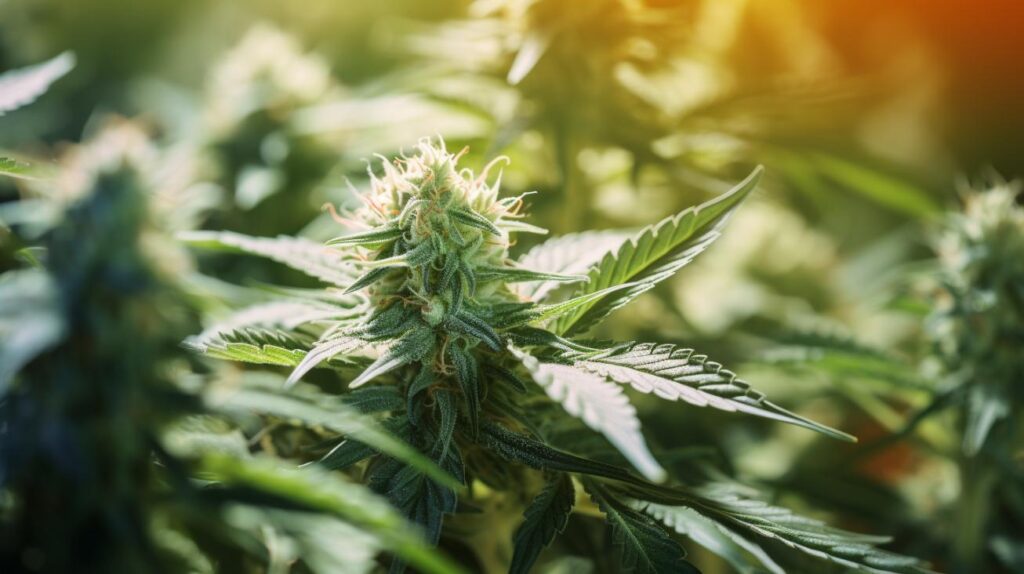
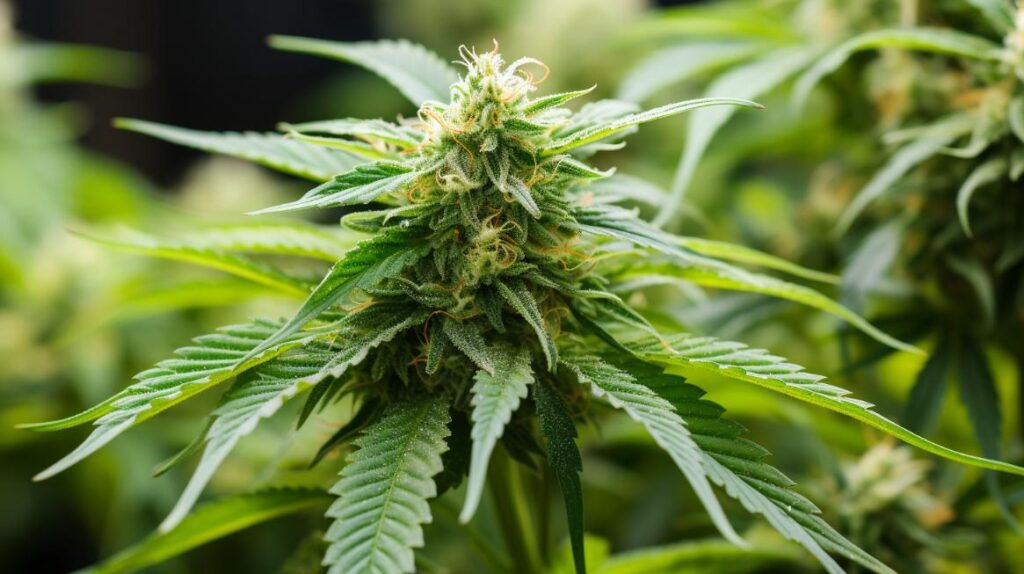

Responses